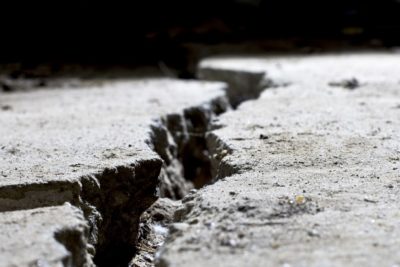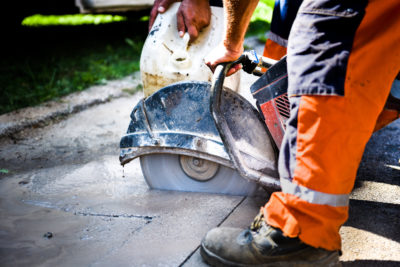Everything there is to know about driveways and crossovers in Western Australia.
There is a lot of confusion amongst property owners when it comes to building, extending or modifying their driveways be it residential or commercial. What can you change? How thick should a driveway slab be? What requires council approval? What is a good driveway slope? What is a crossover?
To be honest, how can something as simple as a poured slab of concrete come with so many questions and have so many specifications? Not to mention every council having their own set of rules and regulations.
The aim of this article is to help shine a light on a very confusing and often frustrating topic of building, modifying or removing a driveway. We’ll also be providing answers to the most burning questions people may have when it comes to ‘what can and can’t be done’, how to start the process, as well as some local council driveway regulations all conveniently written in the one location.
So here it is folks, the hero we deserve but never thought we’d ever need — Everything there is to know about driveways in Western Australia.
What is a driveway crossover?
Whether you’re building a new home or tearing up the old driveway, you’re bound to come across the term ‘crossover’ at least once in your life. You may wonder how on Earth can this 2 syllable word be so complex, isn’t it a part of my driveway and therefore I can do whatever I want to it? Unfortunately, things are never that simple.
A driveway crossover is the part of a driveway that crosses the verge, between the road pavement and the official boundary of a property. For an easier visualisation, it’s essentially the footpath and it’s owned by the council. This brings us to our next question.
Do you need council approval to build a new driveway?
The short answer is yes. Because you’ll need to meet local council’s standard conditions and regulations for your driveway crossovers, an application must be submitted and approved before site works can begin. It’s important to check-in with your local council for specific rules and conditions, as certain councils may have different rules and processes in place.
- For instance, crossover profiles must be graded to ensure stormwater runoff from the main road is directed towards the road drainage system and does not affect neighboring homes or road carriageways.
- Some councils may also require crossovers to be constructed from certain materials, such as concrete (plain or grey coloured), brick/block paving or asphalt (subject to approval) which may be coloured.
Application Process
According to Main Roads WA, applications must contain:
- Completed main roads application form
- Location plan
- Scaled drawing or site plan for a distance of approximately 100m each side of the driveway or to the nearest driveway (whichever is the least). The site plan shall show the plan layout for any existing and proposed driveways, associated works, traffic control devices and road reservation and lot boundaries.
- Additional information as required to show that the proposed driveway and associated works meet main roads requirements.
- A copy of the state government and the relevant local government planning/ building approval conditions.
- Copies of letters of agreement by other authorities to undertake relocation of their buildings and o plant affected by the driveway proposal. Each agreement shall include a state, signed by all the parties to the agreement, as to who is to pay for the relocations/s. Typical relocations involve bus shelters, water valves, electricity power poles, footpaths, pedestrian ramps, traffic signs etc.
- A time frame for reinstatement of the road reserve disturbed by the driveway work and associated works.
Application forms must be completed and forwarded to Main Roads at least 8 weeks before construction is due to commence. It can take up to 21 days before the applicant is notified of the outcome of the application or a timeframe for assessment and approval.
Alternatively, you may find your local councils application rules and procedures at the end of this article.
How wide should a driveway be in Australia?
As outlined by Western Australia Local Government Association,
- Minimum width at the property boundary is 3m
- Maximum width at property boundary is 3m for lots with a frontage of 12.5m or less (except for the construction of a double garage, in which case a maximum of 4.5 applies). 6m for lots with a frontage in excess of 12.5m
- Minimum width for paired crossover at property boundary is 6m.
- Maximum width for paired crossover at property boundary is 8m.
This can vary with local councils. For example, the width of a Residential crossover for the City of Gosnells is:
- Minimum 3m wide at the property line to a maximum of 6m
- Minimum of 5m to a maximum of 8m wide at the road edge
The width of a Commercial crossover is:
- Minimum 6m wide at the property line to a maximum of 10m
- Minimum of 8m to a maximum 12m wide at the road edge
Who’s responsible for maintenance of crossover?
The maintenance of a crossover, including any drainage structures and headwalls, will be the responsibility of the property owner. That said, Main Roads will maintain all drainage flow, traffic signals, traffic signs, pavement markings and vegetation within the road reserve.
How thick should a driveway slab be?
The thickness of the slab is determined by the material it is constructed from —
- Concrete: 100mm minimum
- Asphalt/bitumen: 25mm minimum (subject to council approval)
- Block/brick paving: paver depth to be 60mm minimum
What is the maximum gradient range (slope) for a driveway?
As per WALGA,
- Maximum crossover gradient over paths is 2.5%
- Maximum longitudinal gradient is 5% at the property boundary
- For those in areas with steep grades, the verge on the high side may be graded at 2.0% for three metres and then battered to suit the finished contours at a maximum of 16%.
Local council’s driveway regulations
Western Australia Local Government Association (WALGA)
City of Kalamunda
City of Fremantle
City of Stirling
City of Gosnells
City of Joondalup
City of Swan
City of Melville
City of Cockburn
City of Canning
City of Mandurah
City of Armadale
Do you need to cut some concrete slabs? We can help. We solve commons problems for residential and housing clients every day.
Contact Diamond Cut Concrete today
We cut straight, we cut safe and we cut on time.



